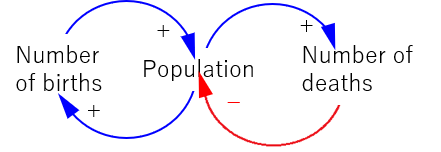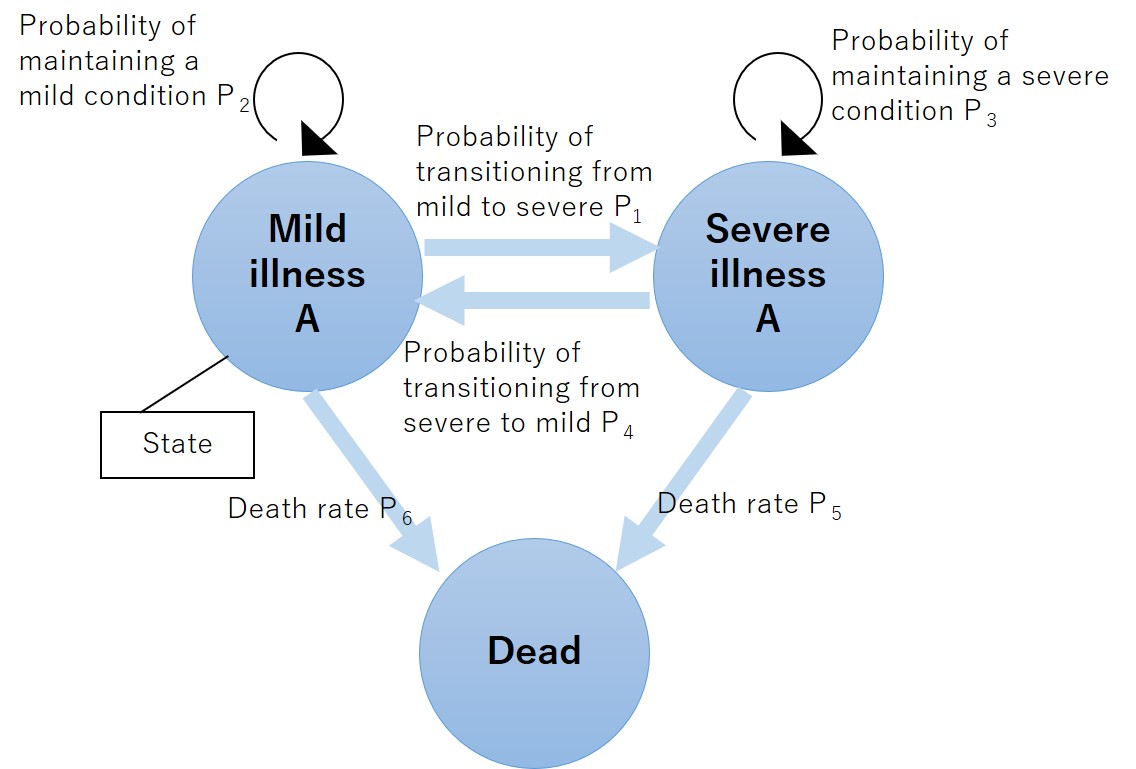National Institutes of Biomedical Innovation, Health and Nutrition | National Institutes of Health and Nutrition< | International Center for Nutrition and Information
Japanese/English
Basic research on health economic evaluation of the effects of nutrition policies on the control of social security costs
Evaluation method
System Dynamics
System Dynamics is a simulation approach for strategy and policy design devised by Professor J.W. Forrester of the Massachusetts Institute of Technology in the late 1950s. In System Dynamics, changes in a social system are modelled qualitatively by causal loop diagrams (Figure 1) and quantitatively by stock and flow diagrams (Figure 2). Non-linear changes, feedbacks, and temporal delays can be incorporated into simulation models with appropriate stocks and flows. The System Dynamics approach has been widely applied to simulation analyses in the field of public health with dedicated software.

Figure 1.An example of a causal loop diagram.
and an increase the population leads to further increased births. The balancing loop shows that increased deaths lead to decreased population, and anincrease in the population in turn lead to increased deaths.

Figure 2. An example of a stock and flow diagram.
Markov model
A Markov model is a stochastic method for simulating transitions of cohorts or individuals among multiple health states over time to calculate costs and effectiveness of interventions (Figure 3). Probabilities of transitions between health states are based on existing data such as cohort studies, publicly available databases, and published papers. Dedicated software is available for Markov model simulation.

Figure 3. A Markov model diagram of patients with a disease A
(Accessed on January 19, 2022)